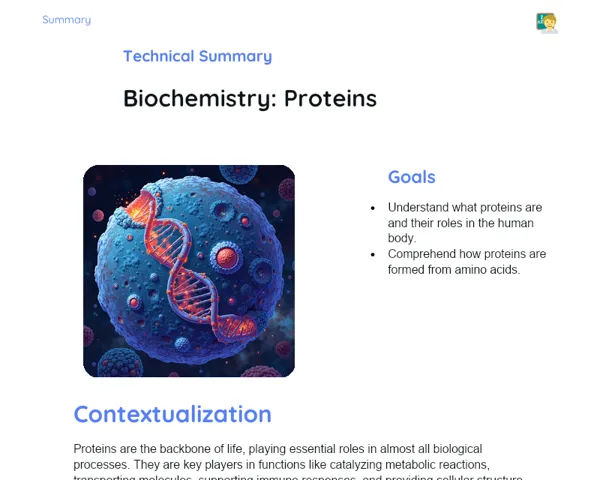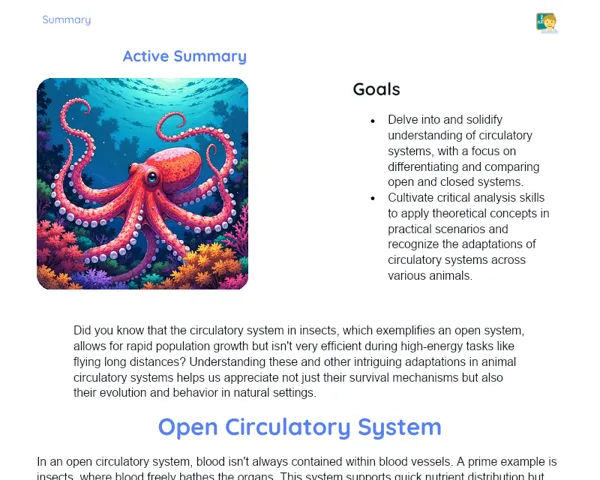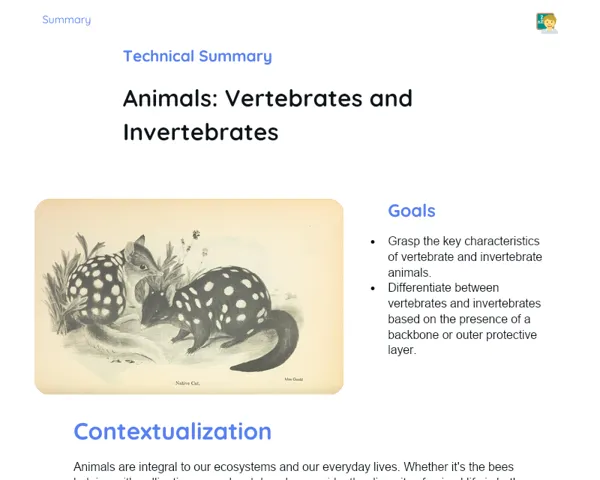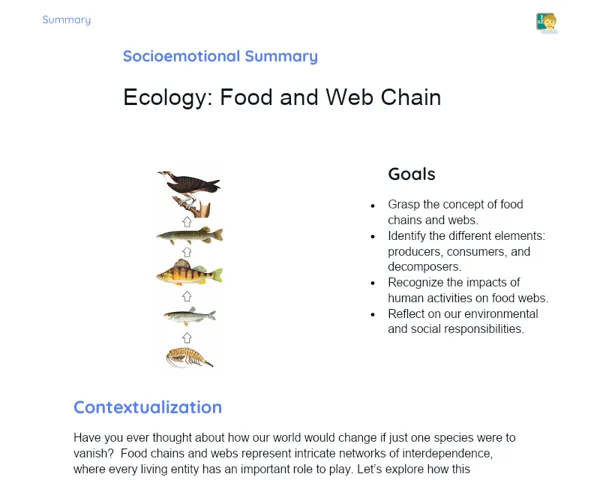Objectives
1. Gain a comprehensive understanding of what biogeochemical cycles are and how they operate on Earth.
2. Critically evaluate the impact of human activities on these cycles, particularly focusing on the water and carbon cycles.
3. Develop practical and theoretical expertise to promote sustainability and conservation of natural resources, applying the knowledge gained to real-world contexts.
Contextualization
Did you know that the water you drink today could have been part of the ocean, fallen as rain in a forest, or even come from an animal's sweat? This is all part of the water cycle, one of the key biogeochemical cycles that support life on Earth. This cycle, along with the carbon cycle, is vital for understanding how essential elements are recycled in our environment, ensuring the sustainability of ecosystems. However, activities like burning fossil fuels and deforestation have severely disrupted these cycles, creating environmental imbalances. Therefore, grasping these concepts and taking action to mitigate their impact is crucial for the future of our planet.
Important Topics
Water Cycle
The water cycle, also referred to as the hydrological cycle, is a constant process that recycles water on Earth, involving evaporation, condensation, precipitation, and runoff. This cycle is essential for sustaining life, ensuring fresh water availability for plants, animals, and humans. Water evaporates from oceans and other surfaces, forms clouds, falls back as rain or snow, and part of it returns to the oceans or is absorbed by the soil, replenishing rivers and aquifers.
-
Evaporation: Water from oceans, rivers, and various surfaces is heated by the sun and changes into water vapor, rising into the atmosphere.
-
Condensation: Water vapor cools and condenses to form clouds, which eventually become saturated and release water back to the Earth.
-
Precipitation: The condensed water falls as rain, snow, or hail, replenishing lakes, rivers, and reservoirs, and infiltrating the soil.
Carbon Cycle
The carbon cycle outlines the movement of carbon among living organisms, the atmosphere, oceans, lithosphere, and biosphere. Carbon forms biomolecules such as proteins, carbohydrates, and lipids, and is released as carbon dioxide (CO2) through respiration and fossil fuel combustion. During photosynthesis, plants capture CO2, produce oxygen and biomass, completing the cycle. Any significant shifts in this cycle, like increased CO2 emissions, directly affect global warming and ocean acidification.
-
Photosynthesis: Plants take in CO2 from the atmosphere and use sunlight to convert it into carbohydrates while releasing oxygen.
-
Respiration: Animals and microorganisms consume carbohydrates, releasing CO2 back into the atmosphere.
-
Combustion: Burning fossil fuels releases large quantities of carbon that has been stored for millions of years in the form of oil, coal, and natural gas.
Human Impacts on Biogeochemical Cycles
Human activities, such as the burning of fossil fuels, deforestation, and pollution, have greatly affected biogeochemical cycles, particularly the water and carbon cycles. The rise in greenhouse gas emissions, especially CO2, contributes to global warming and climate change. Deforestation disrupts ecosystems' ability to manage water, resulting in more frequent floods and droughts. Understanding and minimizing these impacts is essential for our planet's sustainability and future inhabitants.
-
Global Warming: The increase in global temperatures due to CO2 accumulation in the atmosphere intensifying the greenhouse effect.
-
Deforestation: The reduction of forest areas, crucial for climate regulation and the functioning of the water cycle.
-
Pollution: The release of harmful substances into the air, water, and soil disrupts natural cycles and adversely affects the health of ecosystems.
Key Terms
-
Biogeochemical Cycles: Processes that illustrate how essential chemical elements like water, carbon, nitrogen, and phosphorus are exchanged between the living (biotic) and non-living (abiotic) components of Earth.
-
Photosynthesis: The process wherein plants, algae, and certain bacteria utilize sunlight to convert carbon dioxide and water into glucose, releasing oxygen as a byproduct.
-
Greenhouse Effect: The natural phenomenon that warms the Earth's surface by trapping some of the heat radiated by the Earth in the atmosphere due to gases such as CO2 and methane.
For Reflection
-
How do you think knowledge of biogeochemical cycles can assist in framing public policies related to the environment?
-
In what ways can individual consumption choices influence biogeochemical cycles and the health of our planet?
-
Why is it important to promote environmental education for future generations to engage more sustainably with biogeochemical cycles?
Important Conclusions
-
We have delved into the fascinating realm of biogeochemical cycles, particularly the water and carbon cycles. These cycles are essential for life on Earth, and understanding their operation and the effects of human activities is crucial for our survival and that of our planet.
-
We've examined how human activities like fossil fuel burning and deforestation directly affect biogeochemical cycles, leading to global warming and pollution challenges.
-
We've highlighted the significance of each one of us as agents of change, capable of implementing actions that foster sustainability and conservation of our natural resources, thus minimizing our negative impact on the environment.
To Exercise Knowledge
- Environmental Impact Journal: Keep a journal for one week to track all activities that might impact the environment. At the end of the week, reflect on possible changes or actions that could help reduce these impacts.
- Debate Simulation: Organize a discussion at home with family or friends regarding the significance of public policies in conserving biogeochemical cycles. Prepare arguments based on your findings.
- Concept Map of the Cycles: Create a concept map linking the water and carbon cycles to other fields, such as geography, chemistry, and economics, to help visualize the connections between natural and human systems.
Challenge
Environmental Detective Challenge: Select a location near you (it could be a park, a beach, or even your backyard) and investigate how biogeochemical cycles are manifested in that ecosystem. Document your findings through photos and notes, then share with your class or on social media to raise awareness about the importance of these cycles.
Study Tips
-
Utilize visual resources like infographics and videos to reinforce your understanding of biogeochemical cycles. Platforms such as YouTube and Khan Academy provide a wealth of educational content.
-
Engage in online forums and discussions focused on the environment and sustainability. Learning from different perspectives and sharing insights can enhance your understanding and inspire new actions.
-
Try explaining what you've learned about biogeochemical cycles to a friend or family member. Teaching others is an effective way to solidify your knowledge and find new ways to clarify complex concepts.



